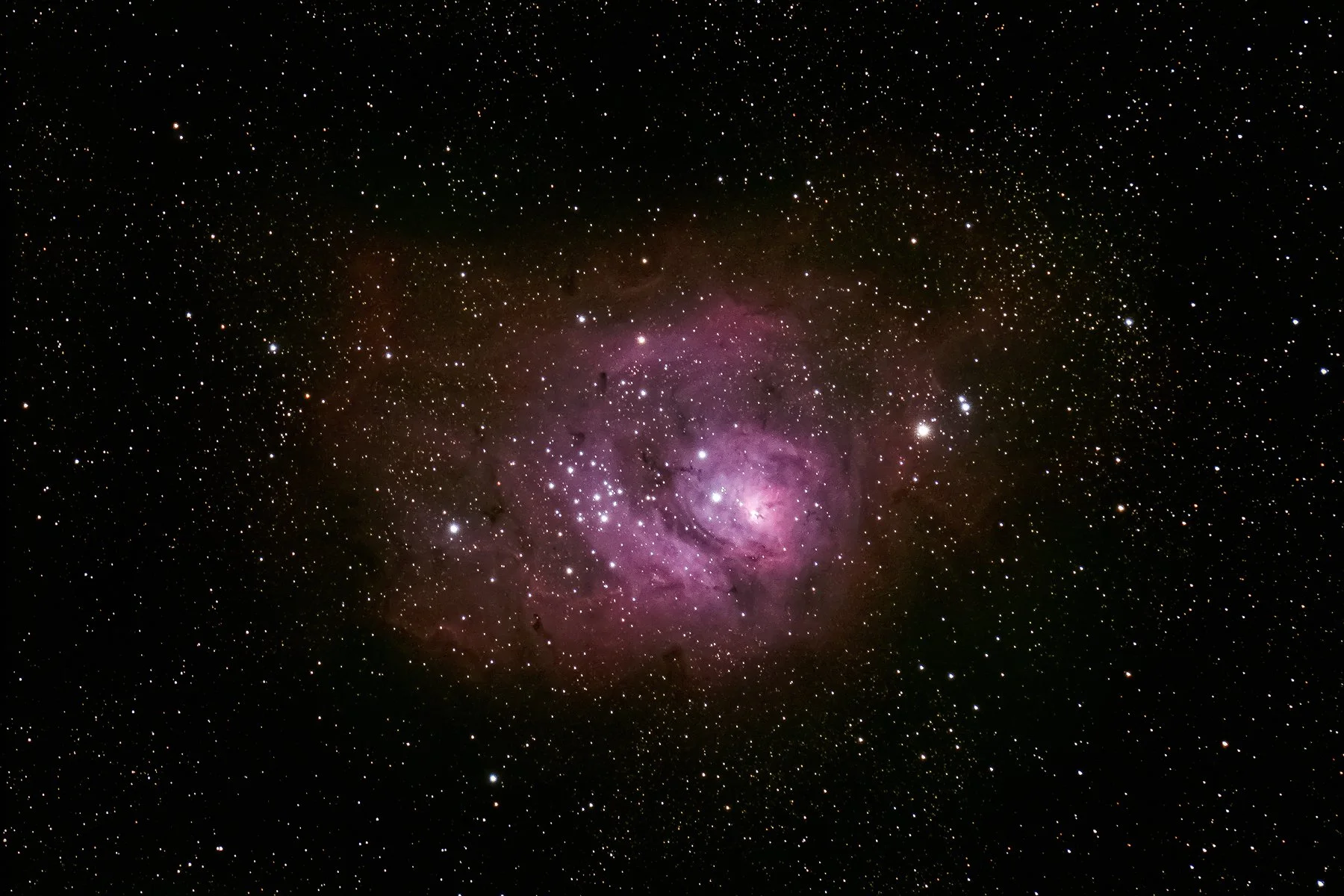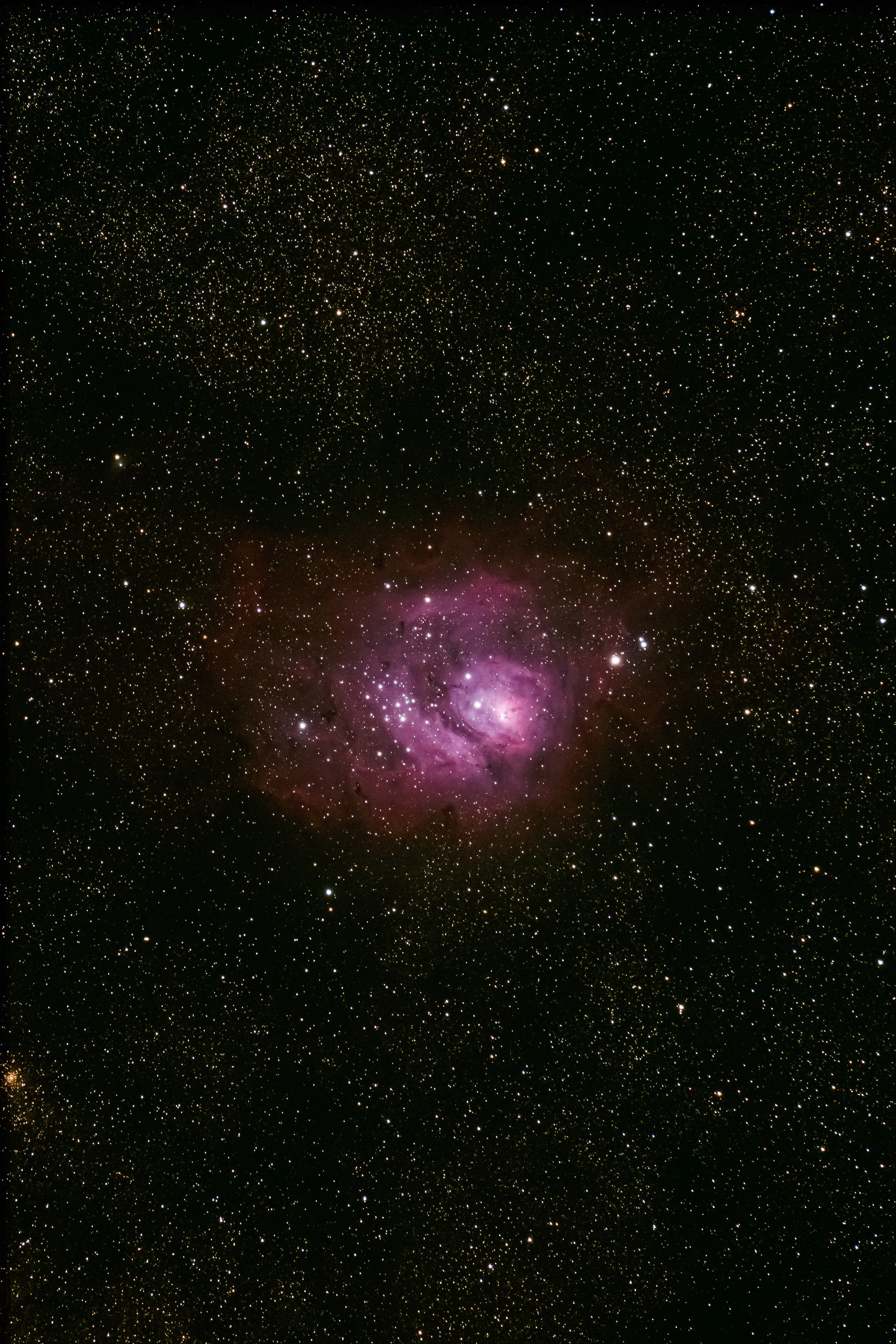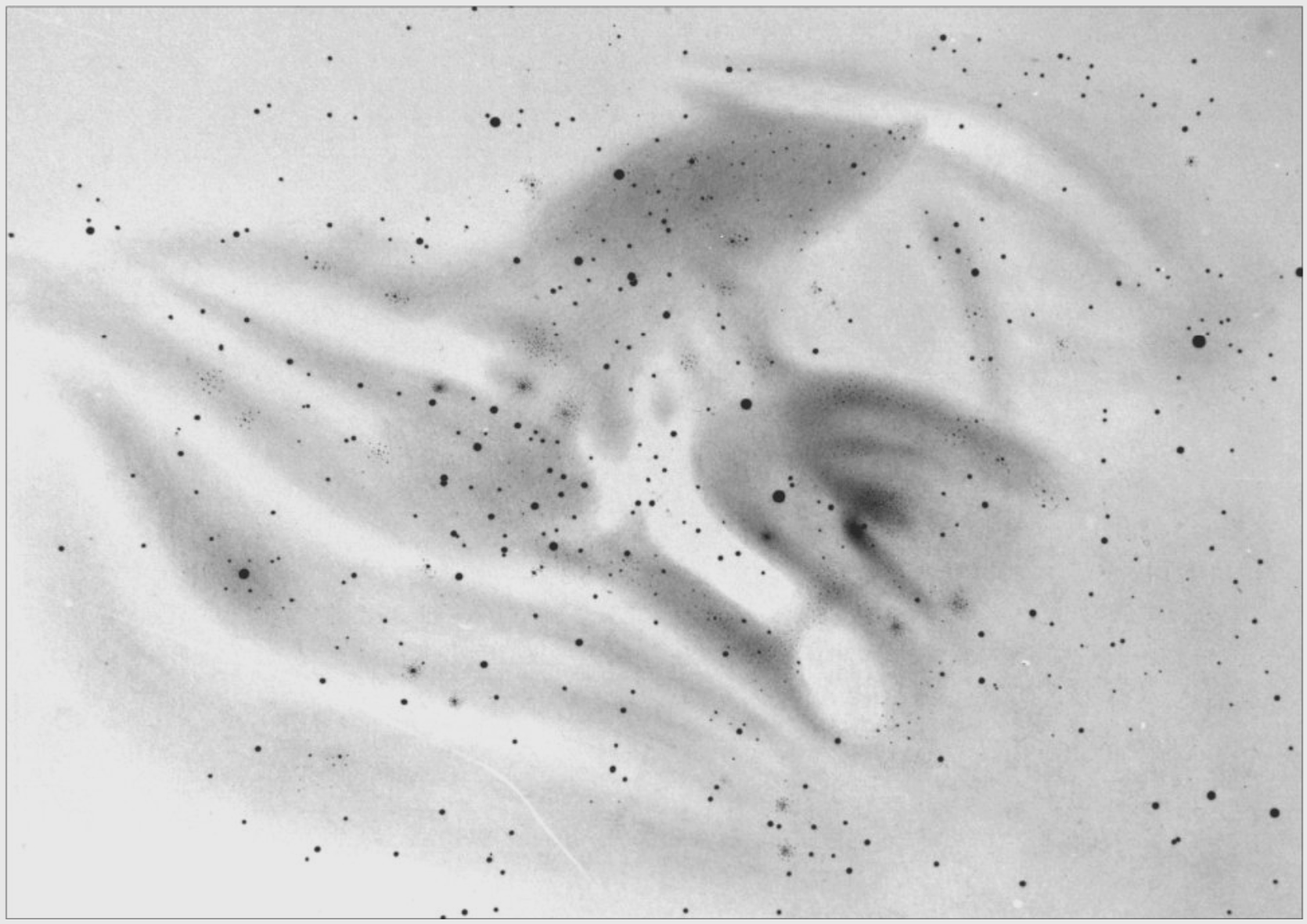M8 - Lagoon Nebula
Type: Open Cluster and Nebula
Discoverer: Giovanni Battista Hodierna, pre 1654
Size: Star Cluster: 9 ly; Nebula: 115 ly x 50 ly
Distance: 4310 ly
Constellation: Sagittarius
My Notes: On July 26, 2022, I captured this image. I was attending the Nebraska Star Party at Merritt Reservoir near Valentine, Nebraska. This was an excellent night. The sky was as beautiful as promised. The Merritt Reservoir is a dark sky site where the visible magnitude is limited to the capabilities of your eye, around 7.5 or 8. I was surprised to see this nestled in the midst of the Milky Way because from my naked eye, it was all one big blob of light, but it looks very distinct when viewed through the camera. The number of background stars on this image is significantly more than the other Messier objects I’ve photographed up until now. I’m unsure if it’s because I took it at the dark sky site or the fact that this object is in the Milky Way.
(The following is the same for M8, M17, M18, M20, & M21) This was the first time using my iOptron CEM26 goto mount and my Fujinon 150-600mm lens. After struggling to capture the first 17 images of this collection using an iOptron Skyguider Pro, I picked up the CEM26. I was waiting hours trying to adjust the field of view using the Skyguider. While I made it work, it wasn’t really designed for deep-sky objects. As such, I could only get about one object each night because it took so long to find it, get it in view, and focus on it. Using this CEM26 let me capture five objects in the same amount of time. It is a real improvement to the practice and made for a much more enjoyable night, though I did miss the hunt that usually comes from trying to locate the objects myself, which I understand makes up a lot of the fun for people with Dobsonian telescopes. Regarding the lens, it also made a huge difference. The internal zoom and focus meant that the lens did not drift as gravity affected it. Focusing was much easier, and it stayed focused longer as the temperatures shifted.
Messier Notes: (May 23rd, 1764) ‘A cluster which looks like a nebula in an ordinary telescope of 3 feet but in a good instrument one observes only a large number of small stars. A fairly bright star nearby is surrounded with a very faint glow’
Le Gentil Notes: (1747) ‘A small nebulosity like the tail of a comet with numerous stars … like the more transparent and whitish localities of the Milky Way’
14 Frame Stack - Mean - 60 sec at f/10 600mm (918eq) ISO 6400 Fujifilm X-T4 XF150-600F5.6-8
Historical Drawing - Wilhelm Tempel (1877)


